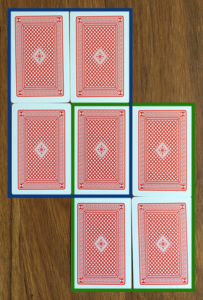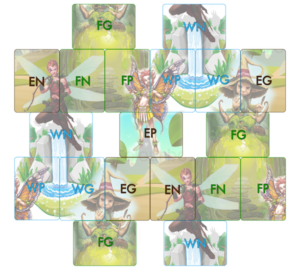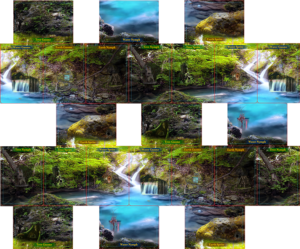Continued from “The origin of a beginning”
With the origin of a beginning of an idea in mind, I started to think about the Hook of the game. (Oh yes, I had been veraciously absorbing boardgame podcasts, blogs and articles, and had picked up all manner of good ideas about how to move forward in this endeavour.) What would make the game … not unique, I’m certainly under no delusion there … but memorable? What would make someone choose it over all the others that are available? What would set it apart from other set collection games?
Well … that’s a good question. My first thought is, “the art work”. Not just that it will be good, or a cool style, as there is plenty of that about, but that it will be integrated somehow. I want to design the cards (and I had no idea how to achieve this) so that when you collect the 4 cards of a set, they are displayed in front of you to form a larger image. Meaning that if you have the 4 different Dwarf cards, you lay them down in a 2×2 grid to form a large Dwarf picture. That would be easy enough to do. The problem is that each of those 4 Dwarf cards has to simultaneously be 1/4 of an Earth/Water/Fire/Air picture, in case you were collecting the element sets instead of the creature sets. Each card needs to be 1/4 of 2 different images.

Which led me to another realisation. If you complete a creature set and a location set, you will only have used 7 cards, as they will have one card in common. They will be two large pictures, joined by a corner card. They will, in fact, be one quite large picture. This highlighted a problem with the concept as it stood. Making groups of 4 cards, meant that each card would be connected on all 4 sides, and all 4 corners. The art on each card would have to connect to 8 other cards. This would probably be pretty limiting. So instead, let’s drop our creatures and elements to groups of 3. Say … Pixies, Nymphs & Gnomes and Forest, Earth and Water. And we can rotate one of the joining cards into Landscape, to give us more of a triangle shape.
And then I discovered that making cards that are part of 2 sets, linked visually in this way, would connect them together, in any direction, infinitely.

So all we the artist needs to do, is make the images blend seemlessly together, so that it doesn’t matter which way you connect the cards, you end up with a fine looking picture. Essentially, instead of designing art for 9 different cards, there will just be one large piece of art, spread out over the 9 different cards. Taking a stock image and very roughly merging the edges, shows that it will work like this:

And so the Hook has become: As each player drafts their cards, trying to complete sets, they are all building their own personal panorama. That feels like a solid idea. What would you call a game where building a new panorama each round is the main mechanic? Maybe ‘Panorama’? That’s a lot of syllables, and a little on the nose. ‘Tableau’ comes to mind, and it’s a pretty good word. But a Google search shows me that ‘tableau’ is already in popular use in the boardgame world. How about …
Scenic.
Continued in Refining Card Layout & Iconography

Pingback: Game Ideas – Esoteric Fulcrum
Pingback: Refining Card Layout & Iconography – Esoteric Fulcrum
Pingback: The origin of a beginning – Esoteric Fulcrum